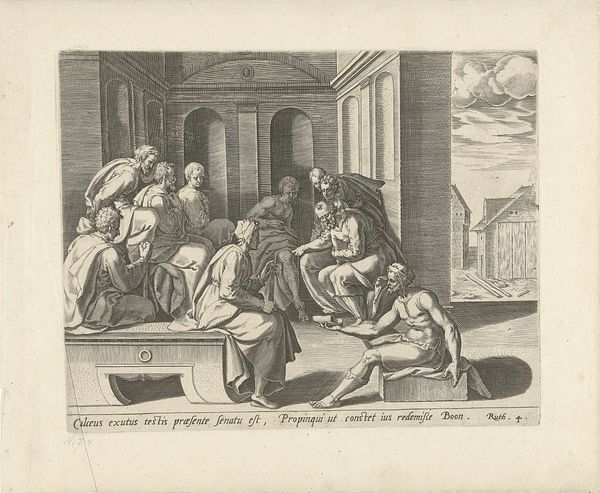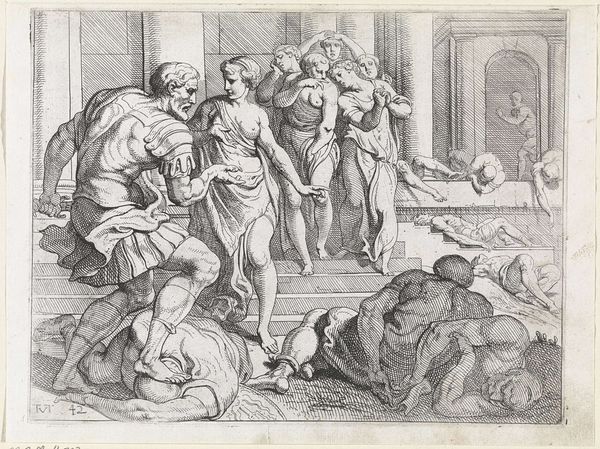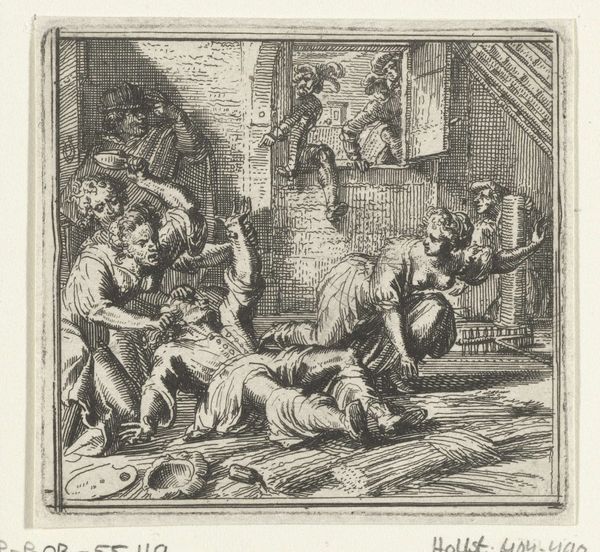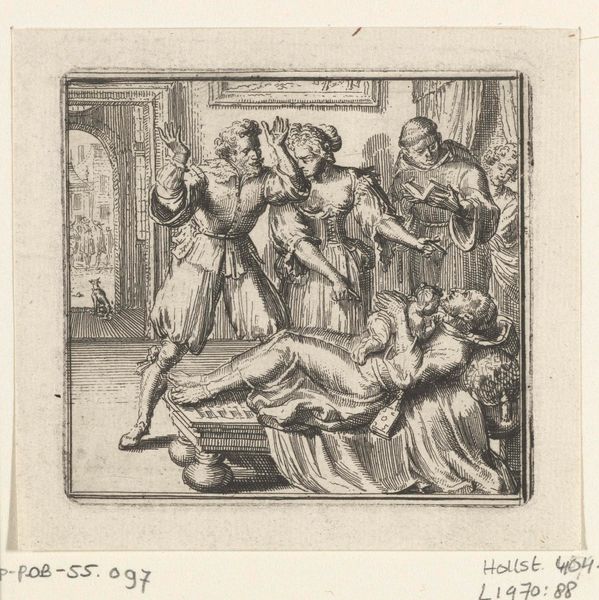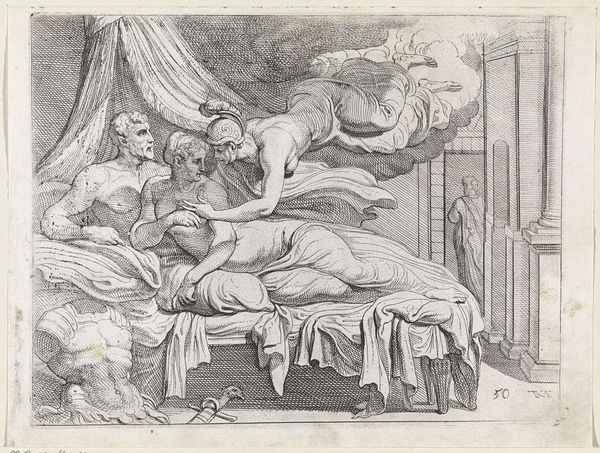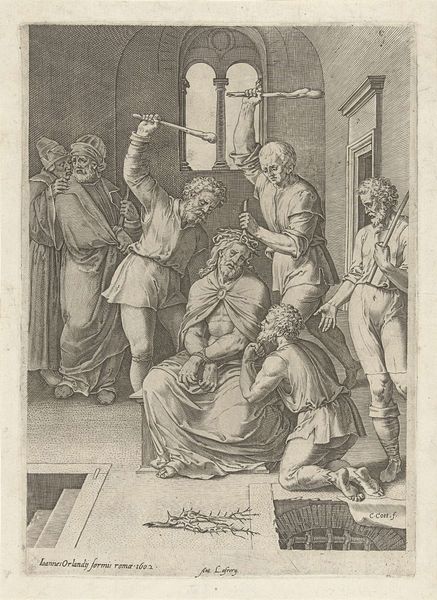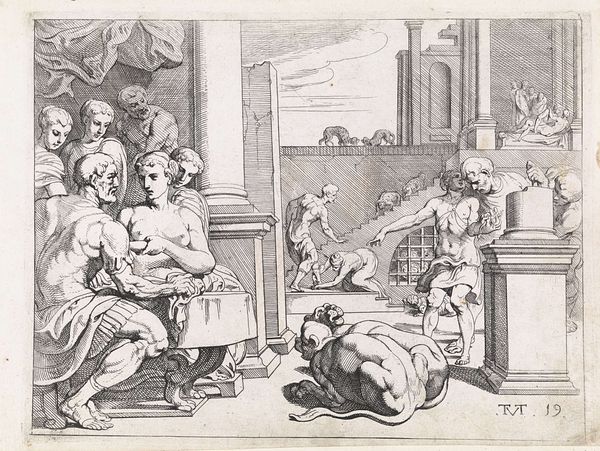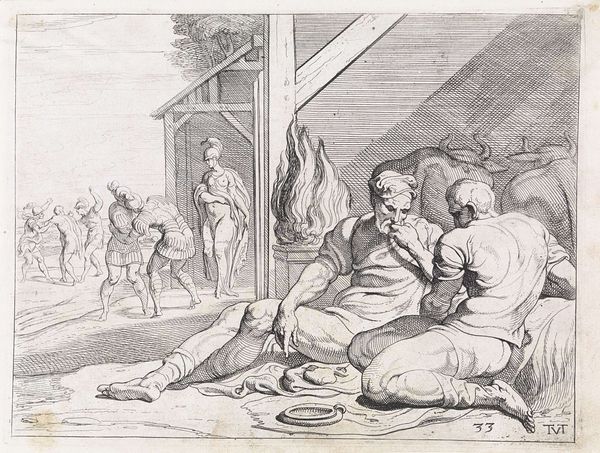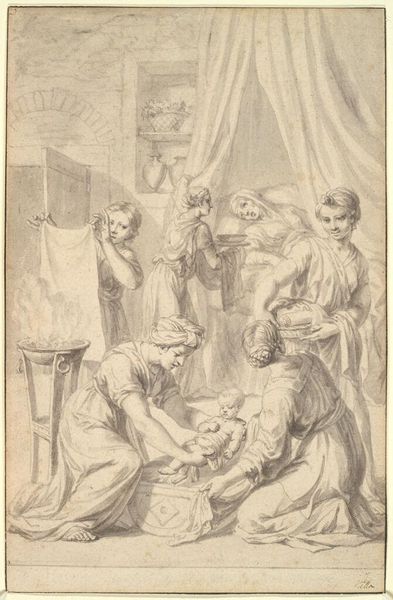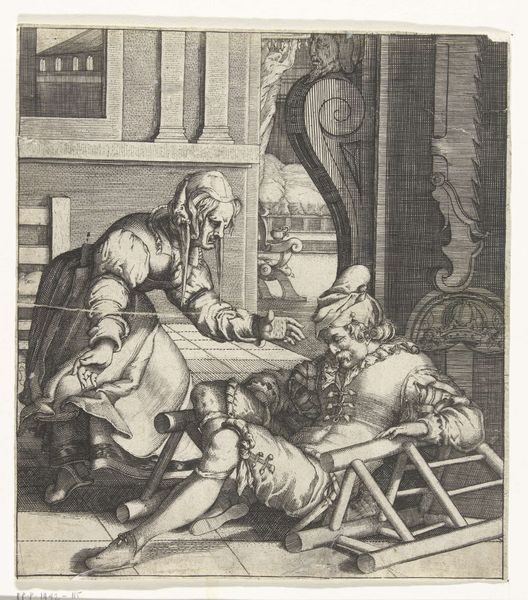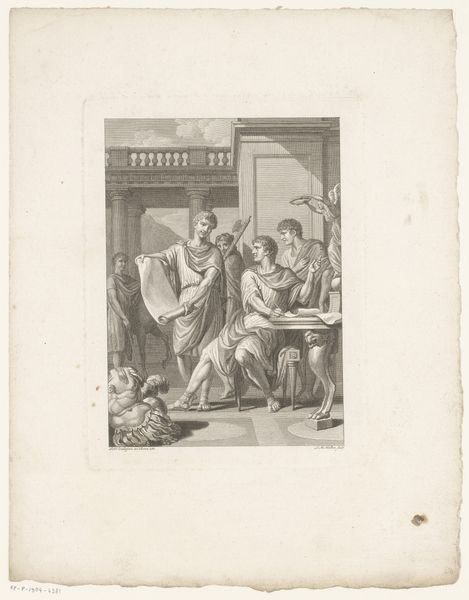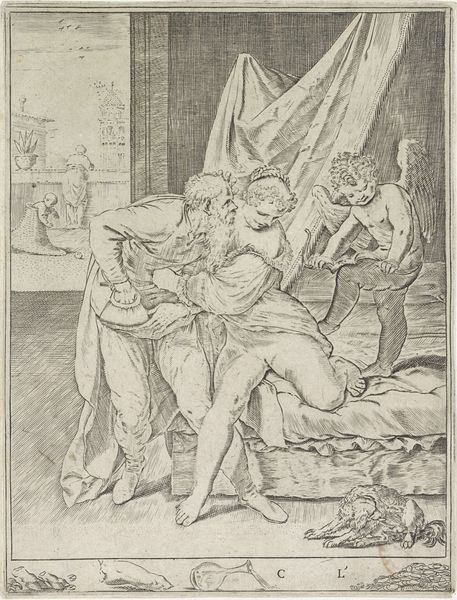
print, engraving
#
light pencil work
#
quirky sketch
#
baroque
# print
#
pencil sketch
#
greek-and-roman-art
#
figuration
#
personal sketchbook
#
idea generation sketch
#
sketchwork
#
pen-ink sketch
#
line
#
sketchbook drawing
#
history-painting
#
storyboard and sketchbook work
#
sketchbook art
#
engraving
Dimensions: height 186 mm, width 242 mm
Copyright: Rijks Museum: Open Domain
Curator: Let's discuss Theodoor van Thulden’s "Gevecht tussen Odysseus en Irus," a print from 1632-1633. What strikes you initially? Editor: It's incredibly detailed for a print, and the figures are quite muscular and active. It makes me think about classical sculpture. What are your thoughts on the work, considering its medium? Curator: The medium of printmaking here is crucial. Engraving allowed for dissemination on a wide scale. It speaks to the consumption of classical themes within 17th-century society. The choice to depict this scene from the *Odyssey* and the level of detail given suggests the artist wanted to convey this material on a mass production scale, but the image’s creation and purpose might invite us to explore the artist’s social status within artistic circles or political systems. What might an analysis of the paper and ink used reveal? Editor: That's a really interesting perspective. I guess it challenges the idea that prints were simply "lesser" forms of art compared to painting or sculpture. Focusing on the production really changes how we view its value. Does that connect with the intended audience? Curator: Absolutely. Van Thulden chose this medium with a purpose; in selecting printmaking, the artist and distributors likely targeted middle-class households seeking access to sophisticated visual culture at a lower cost. Consider too, who was in control of access to the engraving as object, who might have made decisions around its cultural messaging? What are the economics around engraving and printing practices in 17th-century Europe? Editor: I see your point. So, it’s not just about the aesthetic qualities, but also the socioeconomic factors that enabled its creation and distribution, and then control. Curator: Precisely. Looking closely at the labor involved, the cost of materials, and the social context reshapes our understanding of the artwork, right? Editor: Definitely. I now view it as a commodity as well as a piece of art. Curator: Exactly! It’s these considerations that unveil the rich tapestry of art history. Editor: I hadn’t considered how materials can reveal so much about the work and its time, not only its social impact but also production means!
Comments
No comments
Be the first to comment and join the conversation on the ultimate creative platform.
